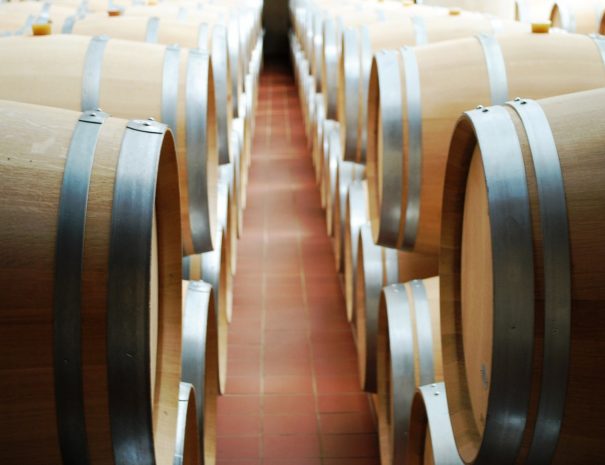
Hotels in Ribera del Duero
Winetourismspain´s blog with articles about Spain´s wine regions, wine tours in Spain´s wine country, local wines and gastronomy … Read More
Ribera del Duero is a young wine denomination in Spain. It is highly reputed, but it is pretty young. Its history cannot be understood without the enormous contribution of the wines of Vega Sicilia, one of the world´s most renowned producers, and Alejandro Fernandez (Pesquera), a true revolutionary in the region.
Like it is the case in many other regions in Spain, the Romans likely cultivated vineyards in Ribera del Duero. Wine could have been produced those days to supply their legions. It was however the monastic orders which spread wine culture in this part of the Iberian plateau. Monks from Cluny produced wine in Valbuena de Duero already in the 12thcentury.
In the nineteenth century, the work of a true pioneer, the Lecanda family began what would be a change for the Ribera del Duero. In the second half of the nineteenth century, the Lecanda family founded a winery on the banks of the Duero River. In its vineyards used international grape varieties, something very unusual in Spain at the time. They planted Cabernet sauvignon, merlot, or malbec. Soon, those vineyards produced an exceptional wine that received the name of Vega Sicilia
Vega Sicilia was for a century an island in an unknown region, as the vintners of the region had only meant to develop local and rustic wines.

The arrival of phylloxera in the region coincided with the crisis of 98 in Spain. The loss of Cuba and the Philippines, Spanish colonies until then, were a time of great difficulty for the country. Phylloxera also left a generation without wine.
After the great plague, Vega Sicilia regained its prestige thanks to the initiative of a Basque winemaker, Txomin Garramiola. But in general terms, the wines from Ribera del Duero were kept anonymous for decades. It was during the 1970s when a bold man, Alejandro Fernandez, produced a high-quality wine. His “Reserva” amazed the wine Critics.
The first was Tinto Pesquera was an amazing wine. Sensual and full-bodied. The wine exalted aromas of ripe berries and prunes, with mysterious notes of graphite and smoke. Over the years, Alejandro Fernández improved his methods and managed to achieve wines with finer tannins. ,
Since 1982, the wine region of Ribera got its own appellation (pretty recent for Spanish standards). The traditional bodegas were supported by the work of smaller producers and also by investors that saw in Ribera del Duero a great opportunity.
Ribera del Duero is located in the heart of Castilla y León. The wine-producing region extends over a hundred miles, following the course of the Alto Douro. It comprises 19 municipalities of Valladolid, 5 of Segovia five, 5 of Soria and 59 Burgos . Burgos holds 85% of the vineyard. The wine tours in Ribera del Duero that we normally propose cover Valladolid and Burgos.

The Ribera del Duero vineyards are situated at an altitude of about 800 meters. The vineyards are spread over both banks of the river, usually very close to the banks. The wider area is barely 30 miles away from the river. The lowest land is devoted to irrigated crops and the highest levels are occupied by the grain, while the vineyard is grown in the intermediate terraces. Some growers prefer higher areas “where the vine freezes”. The terrain is hilly. Plain and stony valley lands alternate with steep hills, sometimes surmounted by lofty castles and forests dotted with pine trees. The vineyards occupy intermediate terraces mainly on clay soils. The riverbanks are formed by alluvial terraces. The highest terraces offer calcareous slopes which, in certain vintages, deliver wines of exceptional quality
The most traditional variety of the area is Tempranillo. Tempranillo is called here “Tinta Fina” (Fine Red) or “Tinta del País. This variety offers in Ribera del Duero more pigment and better fruit acidity than in other Spanish climates. Tempranillo developed qualities that enable highly structured wines. Grenache, Cabernet Sauvignon, Malbec, and Merlot are also grown in this region. The latter is mainly planted in Valbuena. Mixed with Tempranillo, it produces wines of 13º that bear a long oxidative aging process. This coupage produces rich and elegant wines. The juicy tannins melt the smoky and toasted flavors of the oak aging process.
The climate in Ribera del Duero is continental, with extreme temperatures: warm summers and very cold winters. Rainfall varies between 400 liters in Sardon and 560 liters in Aranda de Duero. The vines cannot complain they do not enjoy the sun: the peak can get at 2,750 hours of sunshine per year. Autumns in this part of Span are moderately cold and wet, but the rain does not usually affect the harvest. Spring frosts are common, especially in May, which determines substantial differences between harvests.
In case you are planning to visit Ribera del Duero on your own, we suggest you in this section some proposals to visit the best wineries in Ribera del Duero.

Winetourismspain´s blog with articles about Spain´s wine regions, wine tours in Spain´s wine country, local wines and gastronomy … Read More

Wine tours in Alicante to enjoy excellent wines from Alicante different wine regions. . Wine tasting of Monastrell red wines, white wines and sweet wines from Alicante. Wine tours in Alicante to enjoy excellent wines from Alicante different wine regions. . Wine tasting of Monastrell red wines, white wines and sweet wines from Alicante … Read More

How are the wines in Ribera del Duero? history of this wine region and its wines. Grapes and style of wines in Ribera del Duero … Read More

A map to understand the extension of the Ribera del Duero wine country region, and its location within Spain … Read More
is proudly powered by WordPress